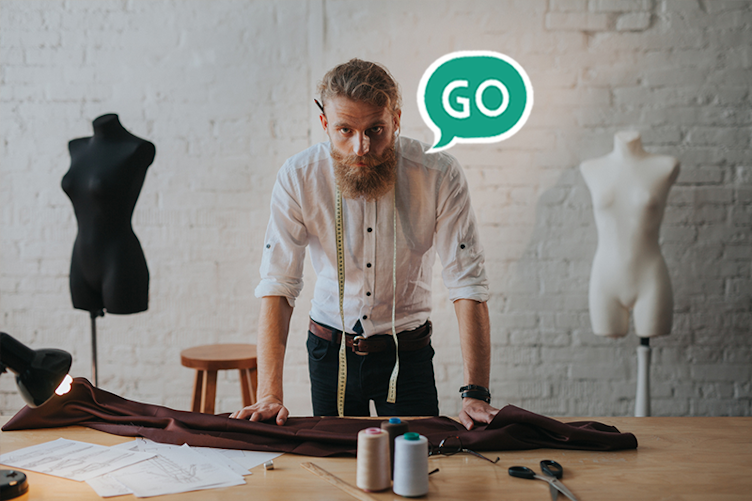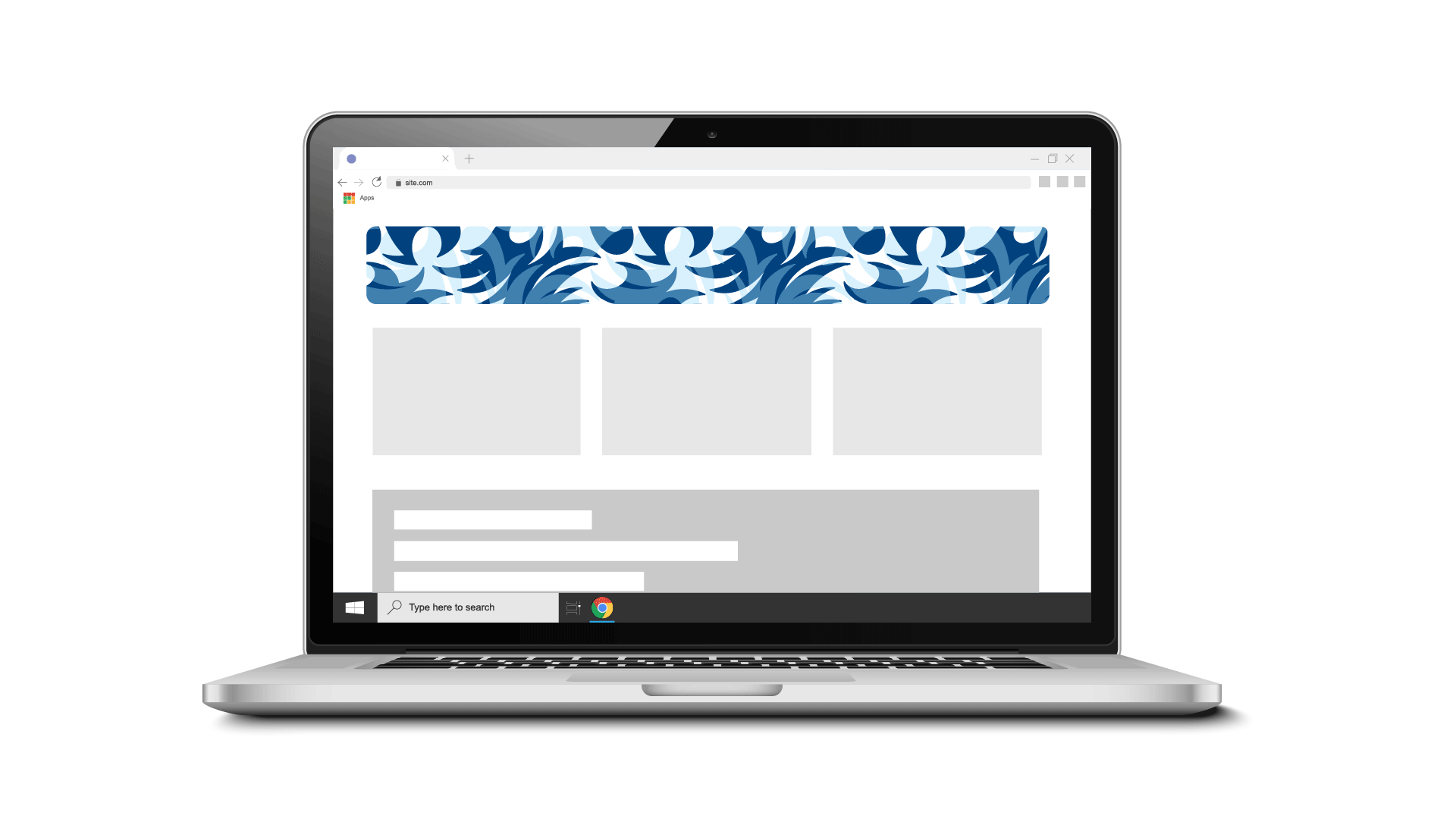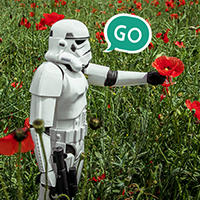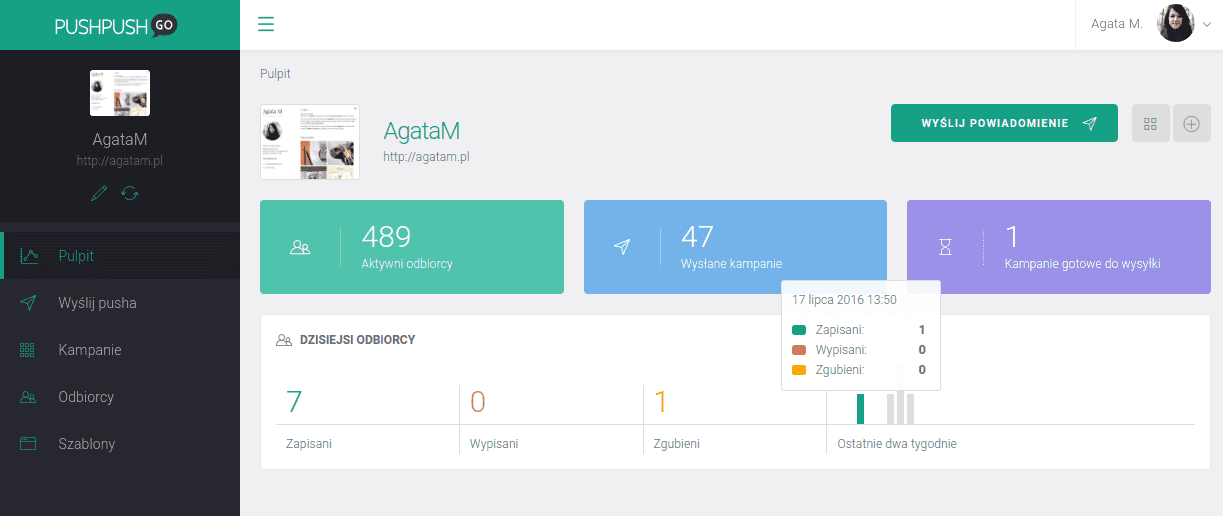From e-mail headers to printed leaflets, personalization in marketing is no longer a unique idea. We live in a time when it is an absolute necessity.
The way the user is exposed to online content is primarily based on recommendations, notifications, and hints, since this is what consumers expect.
The best proof of this is Facebook, which is a mirror reflection of the desires of each user. Going further, we can mention Spotify, Filmweb or Goodreads services. Recommendation for recommendation. Isn't that convenient?
What is marketing personalization?
Contrary to popular belief, this strategy is not just about adding a name to offers sent to potential clients. This is just the tip of the iceberg, which is personalization in marketing.
In order for a message to be considered personalized, you need something more - data on your target groups.
Following this way of thinking, you can conclude that personalization in advertising consists of creating messages that respond to the specific needs of users. The basis for this is collecting and updating key customer data.
We are talking about issues like demographic characteristics, interests and behavioral data that you can get by conducting advanced analytics.
Offers based on customer needs
Modern consumers are demanding. They expect to be treated individually and want to buy products tailored to their needs.
86% of marketers have noticed the direct impact of personalization on the number of leads generated.
92% of respondents say that personalization affects branding.
What is the conclusion? An individual approach to the consumer is not only of great value, but also becomes a specific distinguishing feature of the company. The biggest giants on the market are aware of this, and they are very eager to use this strategy in their activities. We are talking about brands like Coca-Cola, Starbucks, Netflix and Amazon.
Netflix creates personalization standards
Let's look at the Netflix platform for a moment. It is famous for its browsing recommendations, using an algorithm that is constantly developed and improved.
Contrary to appearances, personalization for this platform does not end with this feature. This "streaming giant" has a solid strategy behind what subscribers see when browsing video choices. Based on previous interactions, viewers are encouraged to make another one that is tailored to their preferences.
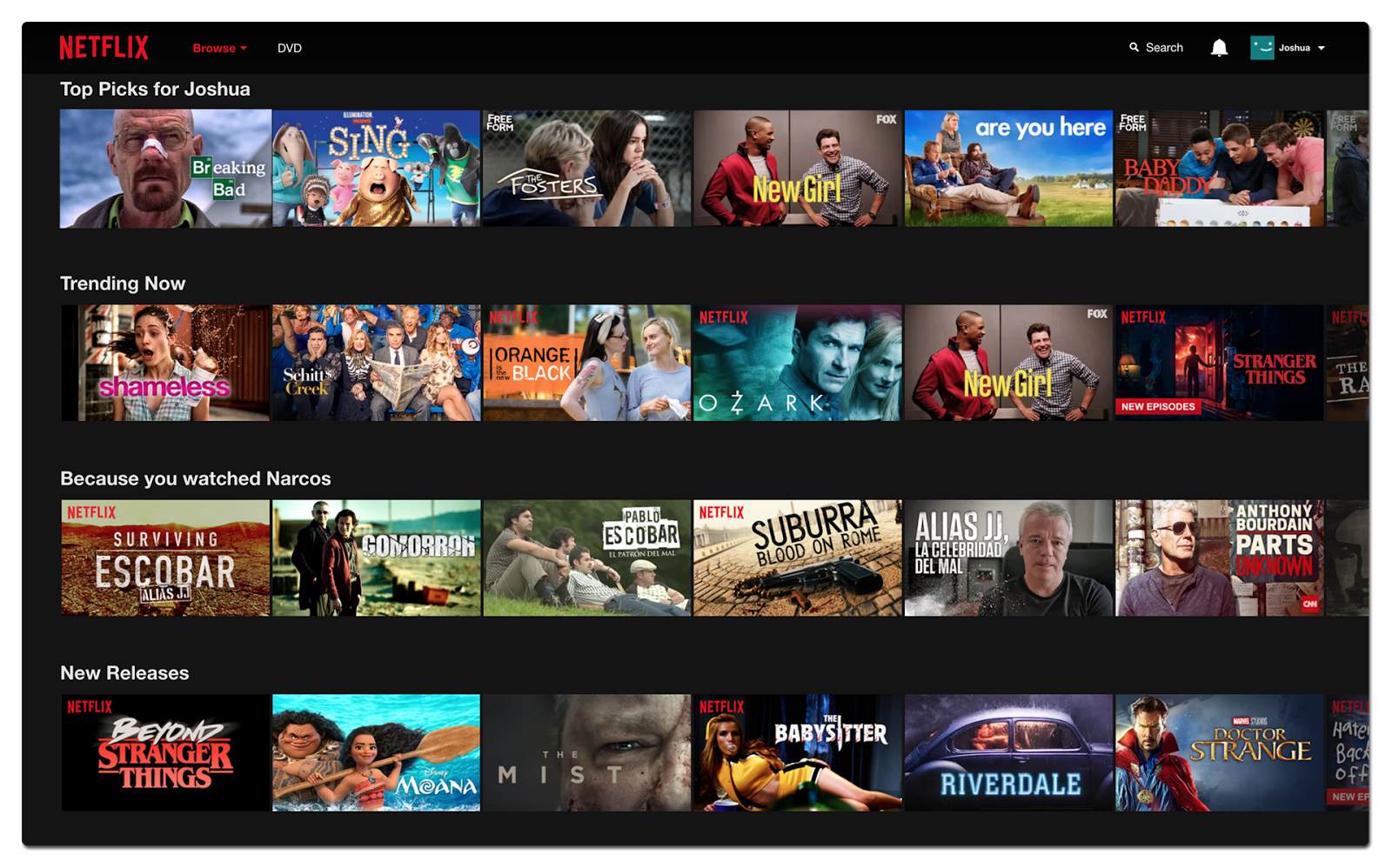
Netflix differs from traditional media offers in that it does not offer just one product. The platform consists of over 100 million products that, through personalization, reach the right recipient.
As we’ve all come to see, relying on this strategy works. This is confirmed by Netflix’s results for the third quarter of 2018, which beat analysts' expectations. According to the report, 6.96 million new subscribers joined the platform at the time, while analysts expected there would be about 5 million.
The other side of the issue—personalization from the consumer’s point of view
Now let's look at this from the other side, from the perspective of the consumer. Customers know that brands take a number of actions to match their offer as accurately as possible, and it’s clear that they like it. Personalization saves them valuable time, and they expect their loyalty to be appreciated later. This is confirmed by the numbers.
59% of customers believe that personalization affects their purchasing decisions.
31% of respondents said their experience could be even more personalized than it is today.
74% of consumers feel frustrated when a message is not tailored to their needs.
What happens if the consumer feels underappreciated and misunderstood by the brand? They look somewhere else.
Ultimately, it costs them nothing to do this, and only requires a series of relevant clicks. The probability of such a scenario is very high. For ordinary consumers it is 50%, and for business customers as much as 64%.
How to implement a marketing strategy based on personalization
The right technology in the right place
The implementation of each new strategy requires having the right tools for it and this applies to personalization as well. Everyone who deals with such activities must ensure that the technology used so far can cope with data collection, segmentation and automation. These factors are necessary to conduct effective, personalized campaigns.
The more data, the better
With the right tools, you can start collecting data about your customers at every stage in the shopping path. When you get information about what particular consumers are looking for and what choices they make most often, it’s easier to deliver personalized content to them. In this case, programs for website traffic analytics and programs for behavioral analytics are very helpful.
You can also use individual data to segment your audience. Segments make it easier to deal with large consumer groups, and will also help you identify the latest trends.
Boosting personalization through multichannel activities
After collecting all the data and their appropriate segmentation, you can start your activities using various channels, platforms and websites. This includes newsletters, social media, web push notifications and more.
Careful monitoring of each step of the conversion path
Another important aspect of personalizing marketing is caring for the customer at every stage of their digital journey. Too many marketers still think that a consumer’s journey ends when they put a product into the basket. Nothing could be more wrong.
In fact, 70% of site visitors go to this stage but ultimately leave their shopping cart behind. This may be disappointing but the battle is not lost—there are still ways to increase your chances of completing the sale.
One of the solutions is web push notifications that can lead a given internet user back to your site. Thanks to a suitably adapted marketing automation scenario, you can send a notification to the subscriber, encouraging him with new products or a possible discount.
Keep everything up to date to keep up with your customers
As with any other process, marketing practices require constant monitoring and optimization to be completely effective. In this case, the best strategy is to run the campaign for several weeks and thorough analysis after its completion. This will give you an accurate idea of the real progress over time.
Technical control of all issues is also extremely important to ensure that the collected data is correct.
You must remember that at the improvement stage you can always take a step back and evaluate the different elements in the strategies you used. These questions should be asked periodically to ensure maximum campaign effectiveness.
Web push as a part of personalized marketing
Web push notifications are based on so-called permission marketing, which means that the recipient must agree to receive them. It is important to emphasize that messages sent this way do not disturb users, on the contrary - they can make their lives easier. They can inform them about discounts, warn against rain or alert them to useful or interesting content.
Registering for web push does not require the user to provide any personal data, which allows him to remain completely anonymous. Thanks to this, the subscription rate for notifications is much higher than for newsletters and typically ranges from 6-12% (PushPushGo data).

Web push notifications and personalization
For web push notifications, personalization works on the principle that you assign tags to users based on their behavior on the page. Then, based on those tags, you divide your recipients into individual segments.
Track users behaviour and send personalized web push notifications - always free up to 500 subscribers! Start testing now!
What does it look like in practice? If the user is browsing a certain category in your store, you can send them a discount on related items from that category.
By monitoring the behavior and interests of visitors to your site, you will gain knowledge that you can also use in other campaigns.
Personalization techniques that boost conversion rates
The fact that personalization helps increase the conversion rates has been mentioned before, although it is worth looking at the following numbers:
93% of companies reported an increase in conversion rates after personalizing search engine marketing
94% of companies recorded an increase after personalizing their websites
92% of companies noticed an increase from personalizing their emails
At this stage of our consideration, however, one very important thing should be mentioned. A strategy based on the personalization of marketing will be effective only if it is properly prepared. Here are six techniques that will help you optimize your campaign properly.
#1. Prepare text personalized according to the referral source
Consider the following situation.
While on social media you come across a mention of an interesting brand. It is recommended by many influencers who post a link to the page in their posts. You click to learn more and ... nothing. You land on the main page, where there is no information about the product or the influencers who recommend it.
You don't know where to go next. What are you going to do now? Disappointed, you probably decide to give up on further searches and then go to the competition.
How could this have happened?
You could have landed on a landing page specially tailored to your requirements and purchased a specific product. Both sides would win. You would be pleased with your purchases, and the brand makes another sale.
This example is the best proof that you need creative, dynamic, yet personalized content based on the source of your targeting. Regardless of whether you do it through social media, web push or newsletters.
Here are some ideas that you can add to each source:
- pop-up
- banner
- web push notification
- headers
- unique landing page
#2. Delivery dynamic content based on time of visit
We’re not talking about changing the homepage background to night time due to the fact that the user visits the website after a certain hour. Personalization of dynamic content brings value to the user. Such communication should be used especially during certain events, which is illustrated by the example below.
Imagine you own a restaurant and want to use this technique. You can highlight the lunch menu during certain hours because that's when users will be on your website. In this way, you will attract their attention and communicate your offer.
Proof of the effectiveness of such strategies is the case of a restaurant in Phoenix - The Gladly. This restaurant used the Duda website building platform to display a banner advertising a special offer during Restaurant Week. The result of these activities? They increased the number of clicks on the "Book a table" button by as much as 70%.
#3. Personalize according to the device used
Personalizing ads based on the type of device used is more than designing a website optimized for the mobile version. In this case, there are many ways to personalize the experience of mobile users. For first time buyers, you can offer the option to log into the community. To do this, just use a WordPress plugin.
If you want to increase the number of potential customers, you can display the "click to call" button on your contact page or on social media.
Here are some tips to help you with this:
- Design the button so that it appears only for mobile users, while other users will see the phone number.
- Make sure the button is displayed only during your business hours.
- For WordPress sites, you can install the Thrive Architect plugin, which allows you to create and customize "click to call" buttons.
#4. Use personalization of dynamic content in notifications and ads
Adapting the right communication in advertising is still a huge challenge for every brand. If you want to do it right, you must use dynamic and creative communication tailored to the browsing history or purchase history of each customer. This is an extremely important tactic in the context of the e-commerce industry.
Here’s why.
According to surveys, almost 70% of online shopping carts are abandoned. This happens for many reasons - the user changed his mind, did not want to set up an account, the additional costs turned out to be too high, an error occurred on the site, etc. Regardless of the reason for the interrupted purchases, the user liked the selected product, so it is worth reminding him about what he left behind. In this case, dynamic ads and web push notifications are an ideal tool to encourage consumers to return and complete transactions.
In order for these ads to work, you need to display similar messages on all channels where you run your campaign. Platforms such as AdRoll, for example.
Good practices also include automatic message matching in the context of promotions tailored to the interests of users. This is how the Yamaha brand worked, which increased their conversion by five times.
#5. Personalization based on number of visits
To all returning users you can display dedicated offers based on their browsing history. How to do this?

Notify them if there is a change in the price of a product or the availability of products they have previously been interested in. You can also greet the new user on the site using web push notifications.
This will deliver a welcome degree of personalization. You can also attach a video or article that will allow you to familiarize customers with your brand. A discount or other special offer may also be a good idea.
#6. Use geolocation
The last, but important technique that you should use is geolocation. You must remember that individual notifications may not interest users from all locations.
Personalization in the context of geolocation can, therefore, be a great solution to increase the number of conversions on the page. This way, your offer will go to people who will realistically be interested in it.
Personalization in marketing - a final word
You’ve probably noticed that personalization lies at the heart of effective marketing activities. By implementing this strategy, there is a greater likelihood of conversion on your site, which means greater sales. Stay one step ahead of the competition and use it everywhere you can!


